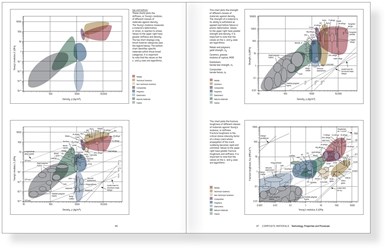New textbook for composite materials in architecture
Author Quang Truong includes materials and process technology as well as detailed studies of projects worldwide by renowned architects.

Photo Credit: Quang Truong
Composite Architecture, authored by professor Quang Truong, claims to be the first ever book about composite materials used in architecture. Its goal is to educate industry worldwide about the potential of that composites offer for increased performance, design flexibility and sustainability in future buildings.
Materials such as carbon fiber and other fiber-reinforced polymers (FRPs) can lead to buildings that are lighter, stronger, more durable and better thermally performing. Their properties also allow for new possibilities in form and structural expressions.
This book describes the technology underpinning composite materials, their history, sustainability issues and unique opportunities and challenges in building and construction.
It includes a foreword by Jan Knippers and features detailed studies of projects using composite materials by architects including: Snøhetta, Herzog & de Meuron, Zaha Hadid, Kengo Kuma, Diller Scofidio + Renfro, Morphosis, Achim Menges, SHoP and Foster + Partners (including the new Apple buildings).
“No other class of material offers high performance for so many different aspects of building.”
Author Quang Truong is a licensed architect, adjunct professor at Portland State University (Portland, Oregon, U.S.) and co-founder of the architecture/engineering/construction (AEC) technology company .
This book is published by Basel: Birkhäuser, 2020 with 312 pages and 80 black and white illustrations as well as 300 color illustrations. It is available for purchase at . For more details, contact the author at quang@polytechnica.design.
Related Content
-
Swedish parking garage to incorporate decommissioned wind blades
Architect Jonas Lloyd is working with Vattenfall to design the multistory building with a wind blade façade, targeting eco-friendly buildings and creative ways to remove blades from landfills.
-
Bcomp, Temca achieve intricate composite cladding for French school façade
A combination of flax and glass fibers went into the development of 880 openwork, shade-providing panels for an international school in France.
-
Renco USA brings Lego-style composite building system to construction
After more than a decade dedicated to R&D, evaluation and testing, the company has proven its MCFR building system in a Lakewood Village project in Florida.








